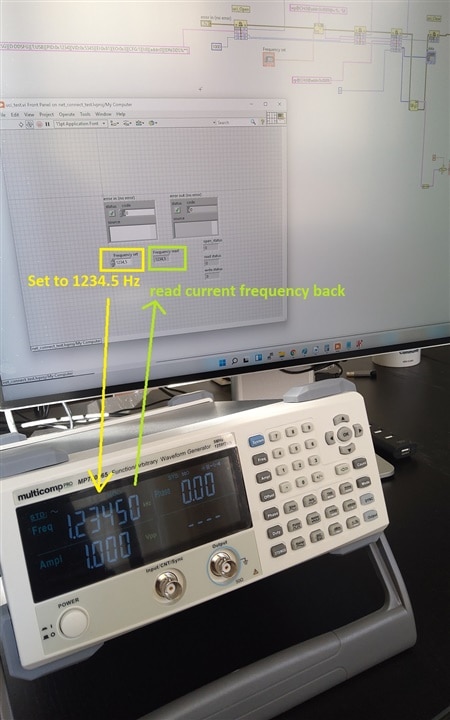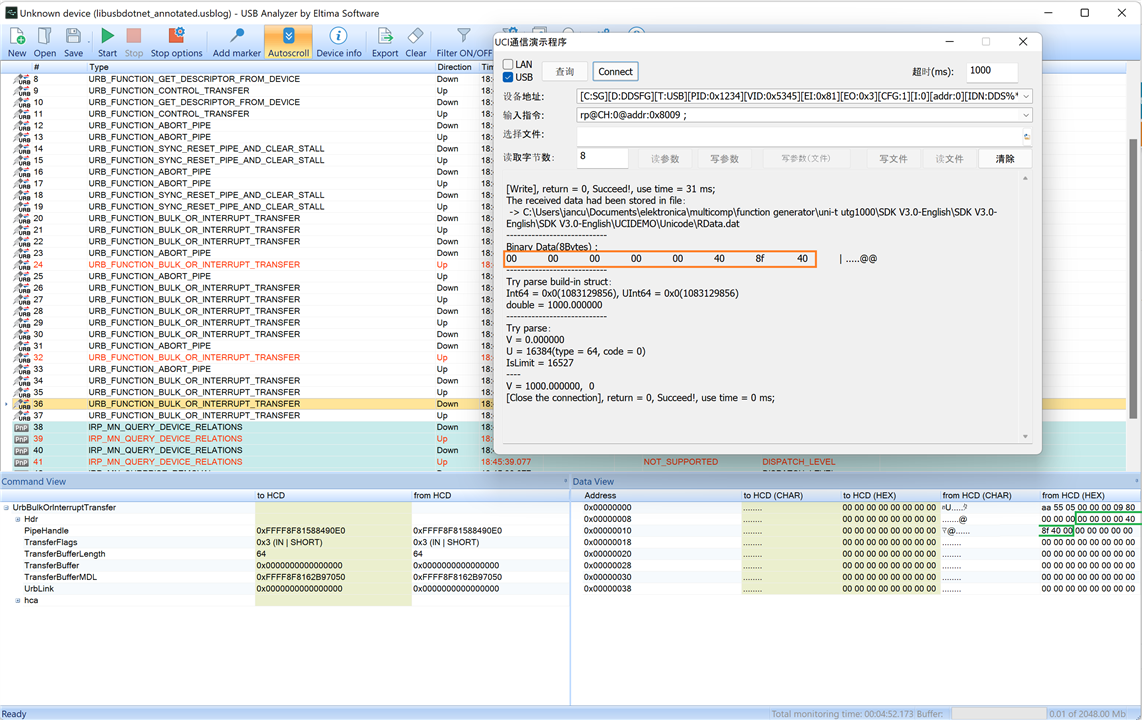Since yesterday, I have a MP750065 function generator and counter.
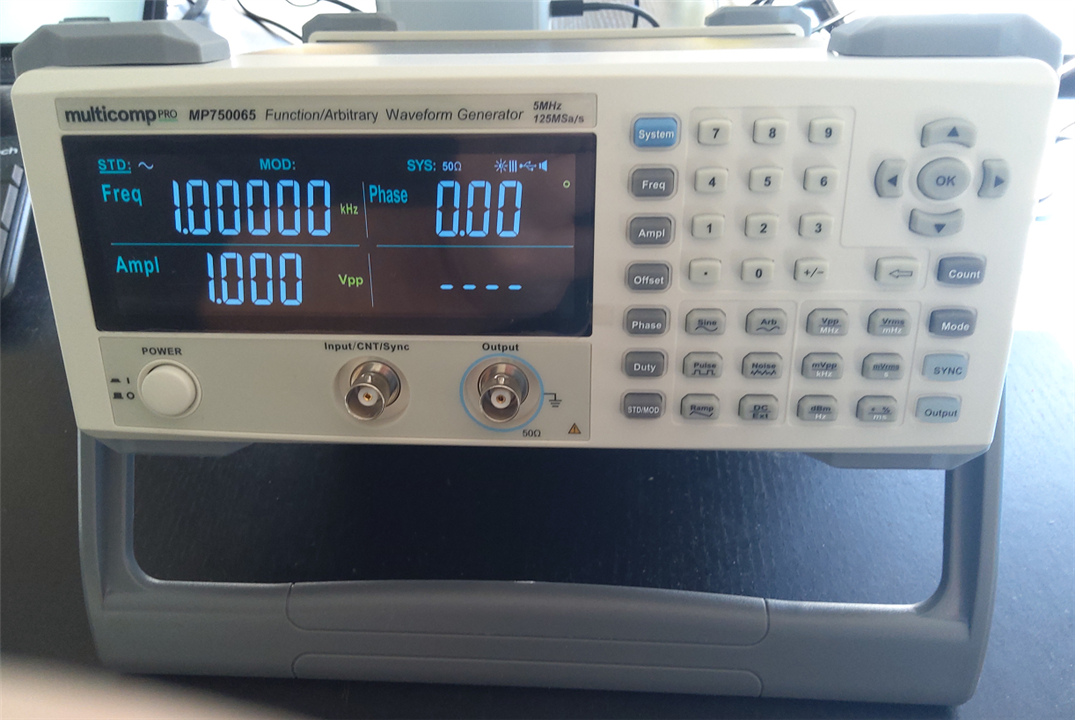
Specs:
- DC to 5 MHz
- 1 µHz resolution
- 5 Vpp in 50Ω (10 Vpp in high impedance)
- sine, pulse and flank (triangle)
- variable duty cycle for pulse. For the other two waveforms this function changes the symmetry
- Sweep linear and Log, start, end and speed are configurable
- AM and FM modulation, with external input
- Sync output, can be used to trigger an oscilloscope while sweeping
- arbitrary waveforms, 20 preloaded. 20 custom waves can be stored
- power output that can drive 4W, with a 200 kHz upper limit.
- counter up to 100 MHz
- USB, remote software
Unexpected specs:
- it's SCPI programmable. This is not mentioned on the e14 shops, but a great feature
- the OEM is UNI-T. This device is the twin of the UTG900C-II
First Use
The basic functionality is easy to use: switching the traditional wave forms, frequency, amplitude. Even duty cycle.
I got started with the instrument in minutes. It shows a default waveform when switching the device and output on. A 1 kHz, 100 mVpp (in 50Ω) sine wave.
Because the popular parameters can be set with function keys, altering that form just works as you'd expect it to.
A few other functions, such as the output impedance switch from high to 50Ω were less intuitive, but I found how to do that without reading the manual too.
Once you go to the more advanced functions, like sweep setup, you'll need the manual the first few times. It's not difficult, but they require that you know the steps.
I haven't used the arbitrary functionality or the counter yet.
Teardown
(I did a more detailed teardown in a later post)
I took a look inside. Mainly two sections: power supply at the back, Instrument and user interface up front. The middle of the box is empty.
To remove front and back, you pull the baby bumpers on both sides. There's a screw under each of them. The connection point of the bumpers is near the end. Releasing and re-fixing them is easy and requires little force.
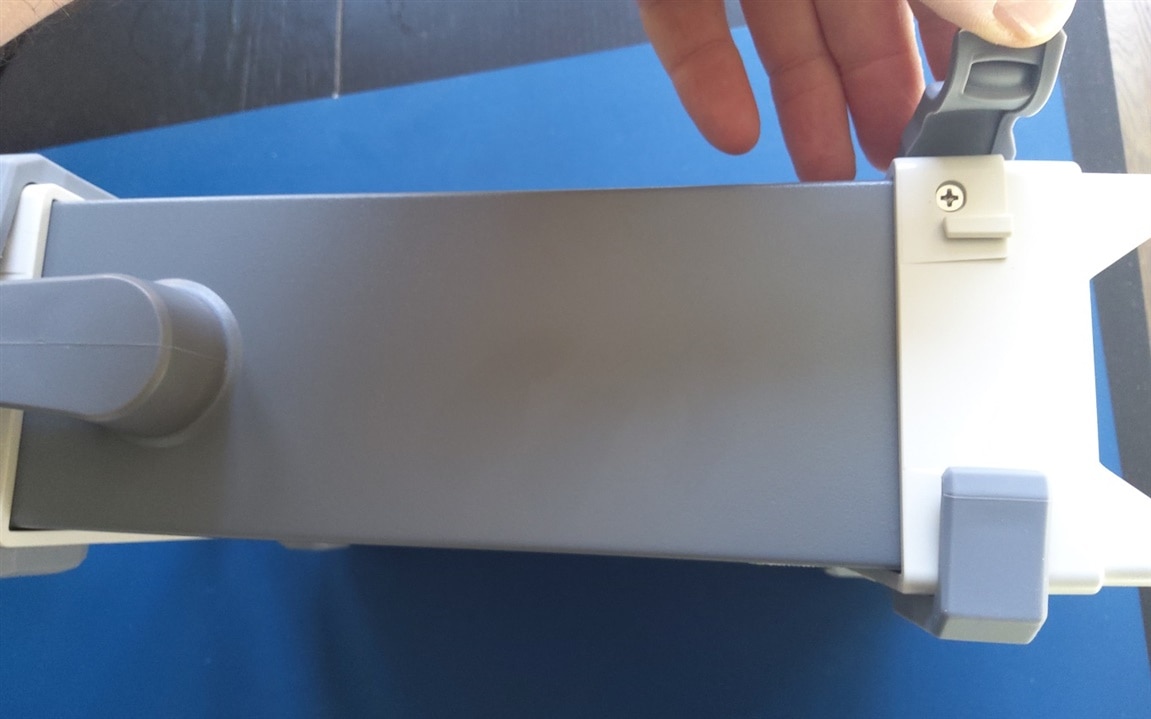
You can then carefully pull both ends of the instrument from the housing. If you disconnect a few cables, you can remove them fully. I haven't done that.
Here are a few photos of the PSU at the back:
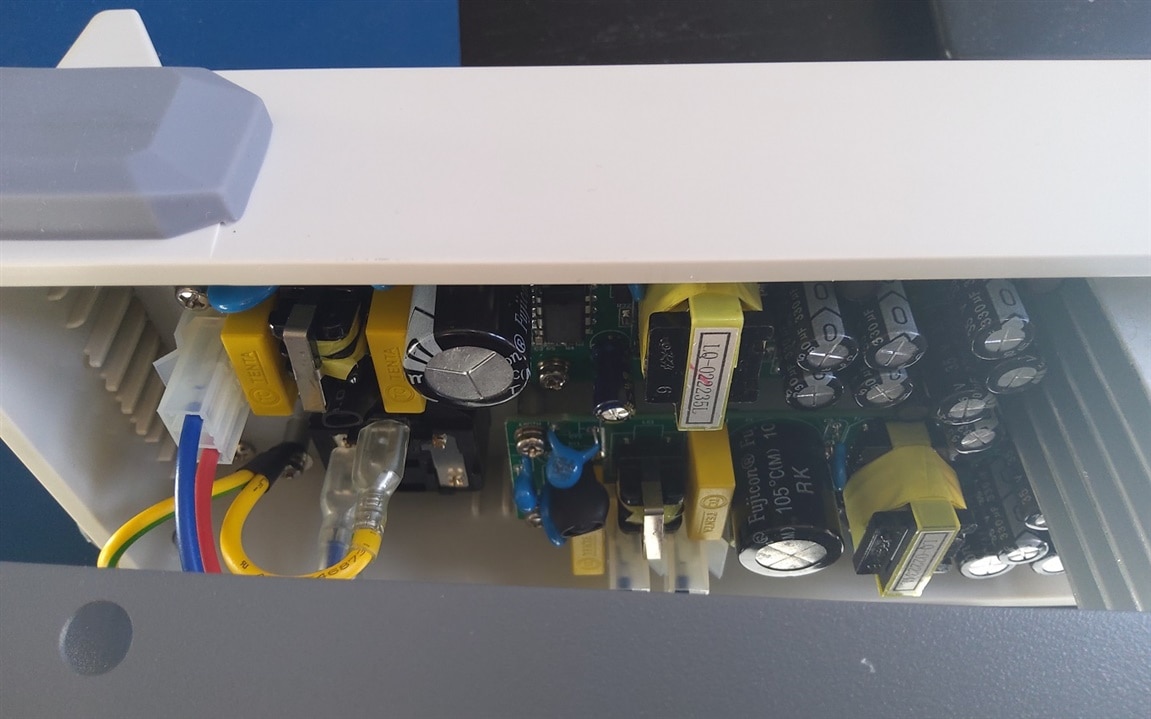
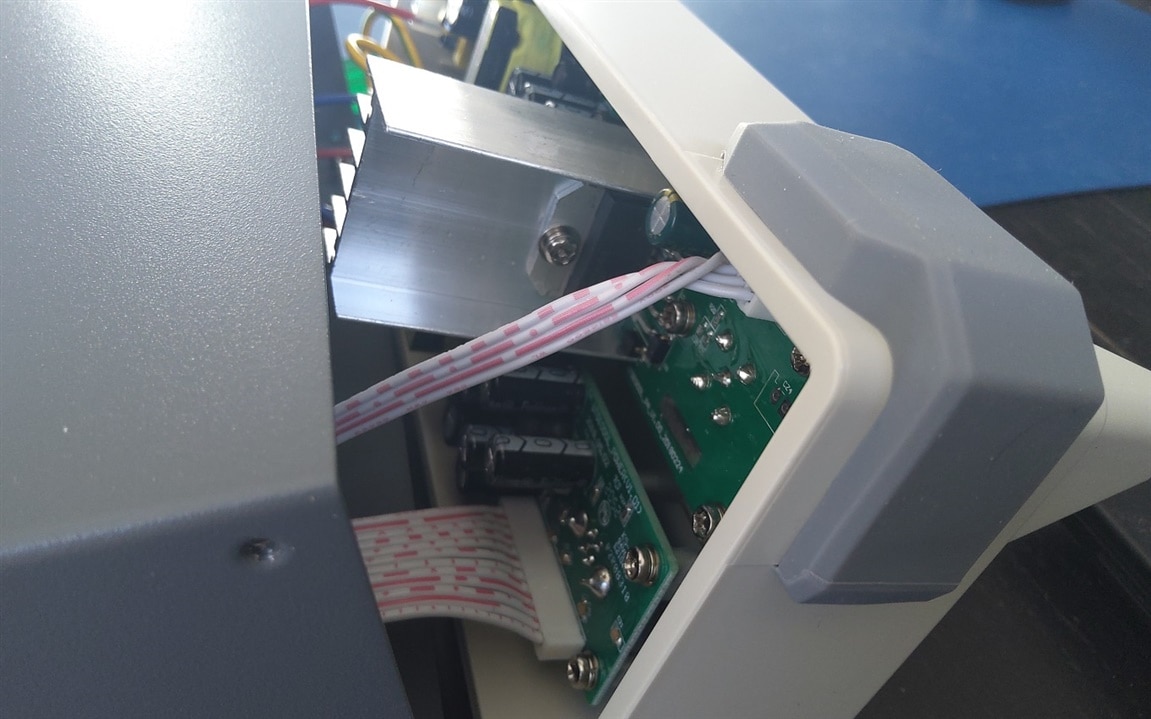
… and some of the instrument side. Spot the ARM and FPGA.
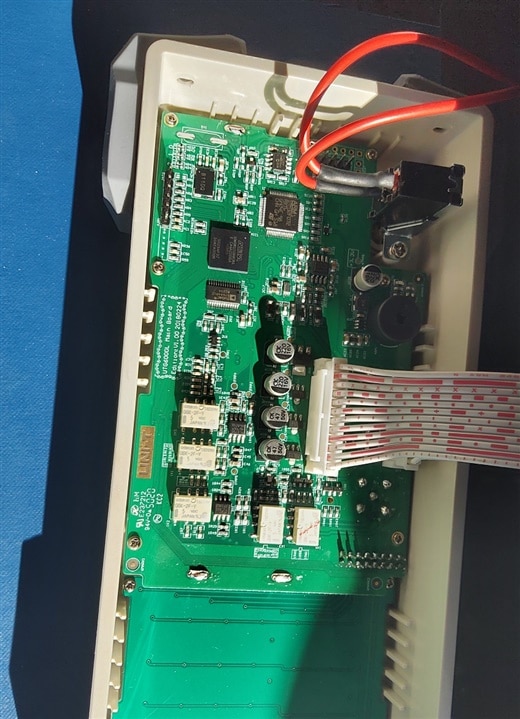
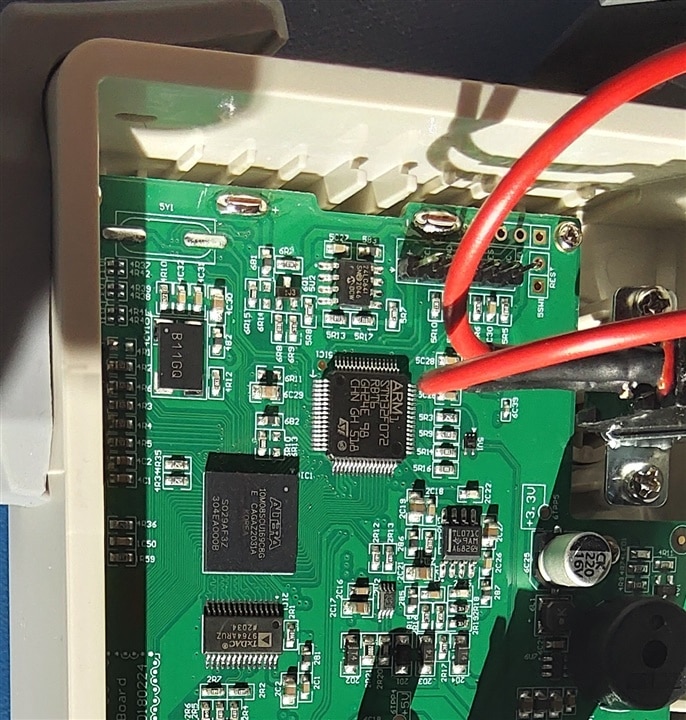
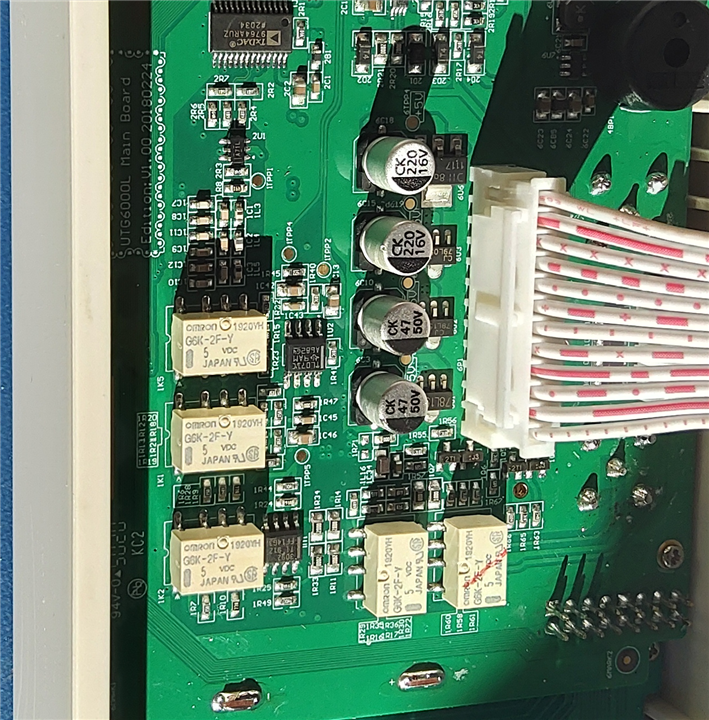
The next one is unsharp. I added it because it gives a good impression of the front panel's backside.
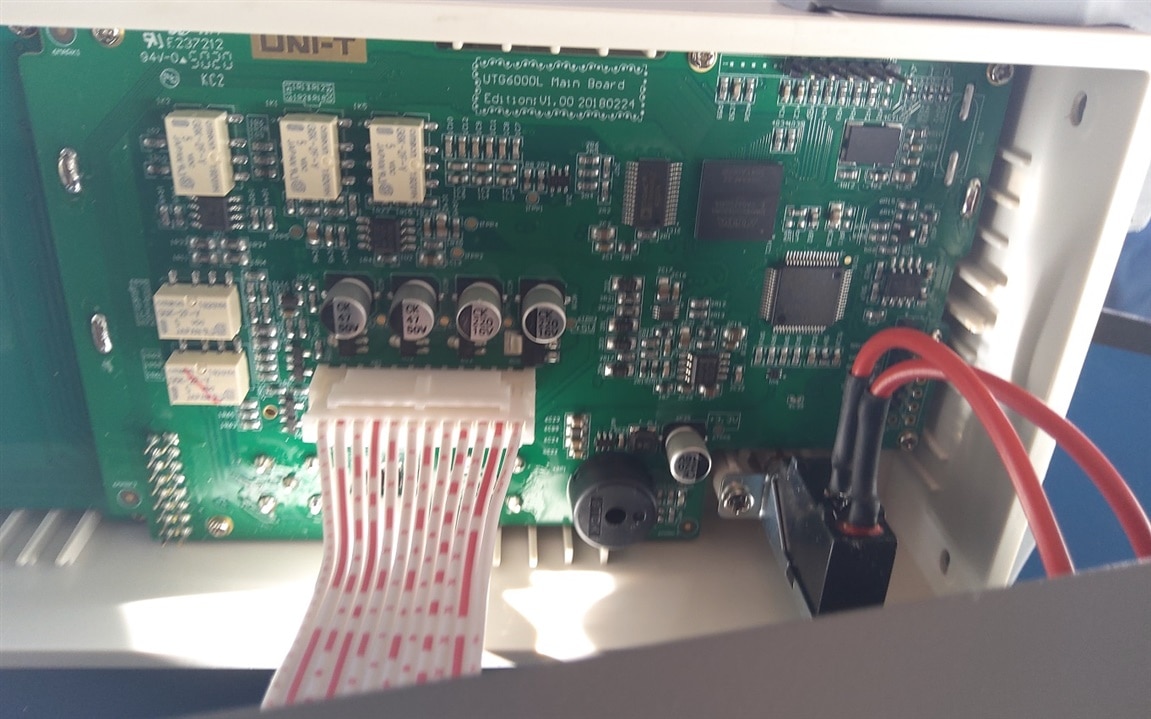
Finally, a peek inside the box:
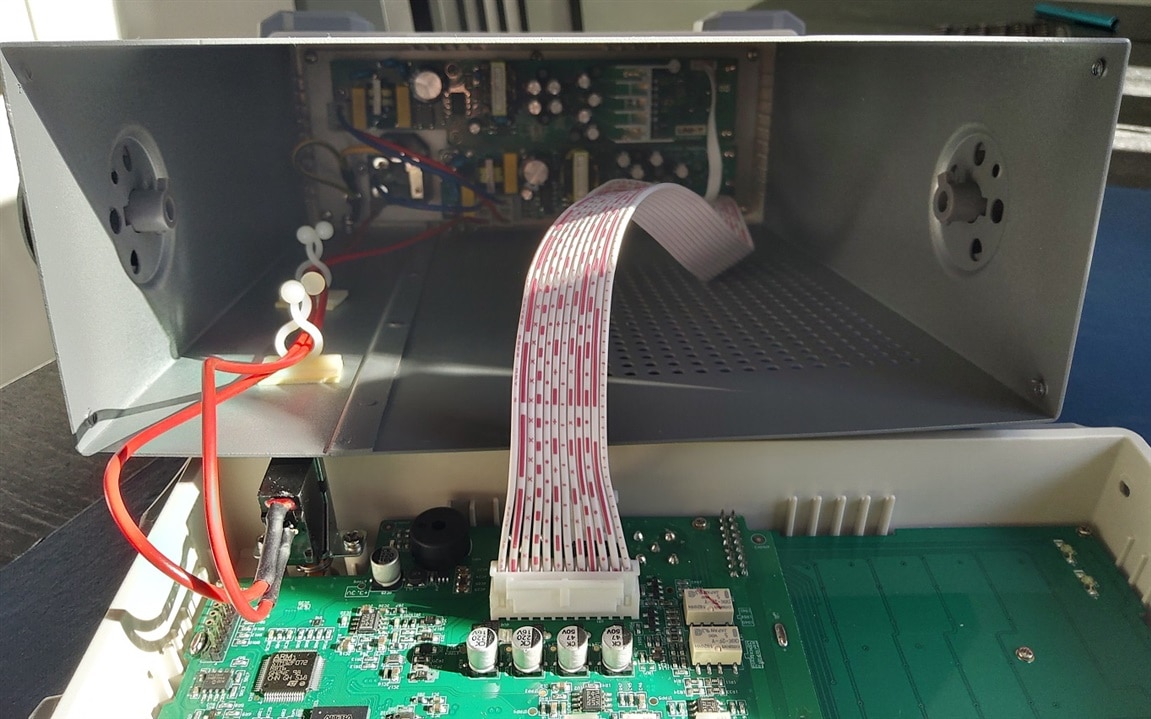
One of the things I learned while peeking inside, is that the PCB had a type number mechanism typically used by UNI-T.
Knowing that MULTICOMP PRO uses OEMs, I went to look online to find the matching model. It's the UTG9000C-II.
It has the identical looks, specs and user documentation. But also a programmer's guide that's not available on AVNET's shops.
There I found that this device should be SCPI controllable. I'll test this out with LabVIEW at a later time.
edit after investigation: it is LabVIEW programmable - but not your typical NI-VISA and SCPI approach. It automates well though.
Thank you for reading.
Related blog:

